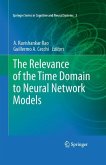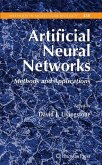urrently a paradigm shift is occurring in for the conventional understanding of represen- which the traditional view of the brain as tions. The paper also summarizes the rationale for C representing the "things of the world" is the selection of contributions to this volume, which challenged in several respects. The present volume will roughly proceed from relatively "realist" c- is placed at the edge of this transition. Based on the ceptions of representation to more "constructivist" 1997 conference "New Trends in Cognitive Sci- interpretations. The final chapter of discussions, ence" in Vienna, Austria, it tries to collect and in- taped during and at the end of the conference, p- grate evidence from various disciplines such as p- vides the reader with the possibility to reflect upon losophy of science, neuroscience, computational the different approaches and thus contributes to b- approaches, psychology, semiotics, evolutionary ter and more integrative understanding of their biology, social psychology etc. , to foster a new thoughts and ideas. understanding of representation. The subjective experience of an outside world This book has a truly interdisciplinary character. It seems to suggest a mapping process where environ- is presented in a form that is readily accessible to mental entities are projected into our mind via some professionals and students alike across the cognitive kind of transmission. While a profound critique of sciences such as neuroscience, computer science, this idea is nearly as old as philosophy, it has gained philosophy, psychology, and sociology.
Bitte wählen Sie Ihr Anliegen aus.
Rechnungen
Retourenschein anfordern
Bestellstatus
Storno









